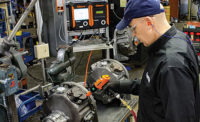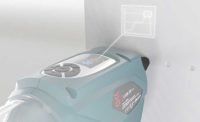Automakers and Tier 1 suppliers hate cross-threading, and for good reason: It raises the cost of fastening operations through increased rework or scrap. The good news for manufacturers is they can use specially designed thread-rolling screws to prevent this problem, which occurs when the threads of a fastener do not align with those of a nut or a tapped hole.
Interestingly, one manufacturer’s concern about cross-threading spurred the development of the first thread-rolling screw. In the early 1960s, General Motors advertised to fastener companies its need for a fastener that formed threads in heavy-gauge materials like a tapping screw. General Motors was convinced that such a fastener would prevent cross-threading.
An engineer at REMINC accepted the challenge and developed Taptite thread-rolling screws. Within a few years, Taptite screws were being used by several automakers. By the 1990s, several types of thread-rolling screws were available and being used in other industries, such as white goods.
These days, there are a wide variety of screws for specialized tasks and specific fastening problems. They feature drive styles like the Mortorq Super, which quickens bit engagement and facilitates automated assembly, and head styles like the Ecosyn-Grip, which prevents loosening due to vibration.
Driven to Design
The Phillips Screw Co. is best known for its Phillips drive with a cross recess. But, the company has developed many other innovative drive designs since 1934.
“We used to develop a drive system every 20 years or so,” says Mike Mowins, president of Phillips Screw Co. “Our Pozidrive metric cross recess came out in the 1960s, followed by ACR ribbed drives in the 1980s. But in this age of specialization, we need to create them more frequently.”
The Mortorq drive series is Phillips latest. It consists of the Mortorq spiral drive (2002), Mortorq Super enhanced spiral drive (2007) and External Mortorq Super for bolts (2013).
Mortorq was developed to provide aerospace manufacturers a drive head that ensured removal of all screws (intact and damaged) during plane repairs and overhauls. None of the screws manufacturers were using had drive heads strong enough to handle the extra torque needed to remove damaged screws or those stuck in place due to wear.
“Often times, the drive head failed before the screwdriver,” notes Mowins. “Mortorq makes sure the screwdriver fails before the screw does.”
The Mortorq and Mortorq Super drives feature four curved, triangular wings spread from a center point. This shape provides full contact of the driver bit. Its low-profile head reduces the weight of fastened components, and its shallow recess enables off-angle driving and accommodates paint build-up.
Mowins says that Mortorq screws are used in aerospace and military applications, including the Boeing 787 and Lockheed Martin C-5M Galaxy. In contrast, Mortorq Super screws are used in the automotive, electronics and white goods industries. Common applications include micro-screws for computers and fastening automotive seat tracks.
The External Mortorq Super drive for bolts features a six-curved-star that replaces the 12-point-flange raised design. Mowins says one jet-engine manufacturer switched from the flange to the star design because its shorter head saves considerable weight (30 pounds per 1,000 ¾-inch-diameter bolts) and enhances engine efficiency.
Threads and Heads
Thread-rolling screws are well-known for preventing cross-threading. But, they also offer other benefits, including reusability and vibration resistance.
REMINC’s Taptite W, Taptite II and Taptite 2000 screws feature a trilobular thread body that has a triangular cross-section rather than a circular one. The trilobular shape produces high-stripping torque with limited friction during thread forming. It also increases holding strength while reducing material displacement.
Ken Gomes, vice president of engineering and product development for REMINC, says the original Taptite screw featured 60-degree threads, as do Taptite W and Taptite II screws. However, the flanks of the threads on the 2000 series feature a convex radius profile that allows thread forming at a lower torque. The profile provides higher drive-to-fail and drive-to-strip ratios than other designs. It also resists internal thread stripping and ensures axial alignment.
Last year, REMINC introduced the Remform II thread-forming screw for plastics. It features asymmetrical threads that have radius leading and trailing flanks with a center tip angle. The leading flank and tip angle form the mating thread, whereas the trailing flank resists pull-out forces, whether they be applied by a tensile load or induced by torque.
Another thread-forming screw is Rolok from Semblex. Each of its threads features three asymmetrical lobes that form mating threads in the nut or nut member. The screw has a minimum straight tensile strength of 135,000 psi.
“Because of its spiral profile body, the fastener provides full engagement in aluminum C-channels and non-round holes,” says Gene Simpson, vice president of quality and engineering for Semblex. “It can also be replaced with a standard machine screw, if necessary.”
The screw can be used in steel, aluminum, bronze, brass and any stainless steel with sufficient ductility to form matching threads. Simpson says it is used extensively in the auto, electronics, heavy equipment and home-entertainment industries.
Mike Garver, president of MAThread Inc., invented the MAThread anti-cross-threading screw in 1995. He took a standard screw and filed the threads to the shape he wanted. Then he intentionally tried to cross-thread the screw with a nut and couldn’t. By early 1996, MAThread was in production.
The MAThread screw can correct any degree of axial misalignment. It features a dog point that aligns the screw and nut upon insertion. As the screw is turned, its threads cam over the female threads, forcing the two helixes into alignment. Garver claims that misalignment is impossible.
“In early 1996, when Ford heard about our new product, they contacted us about a serious cross-threading problem they were having at their plant in Chicago,” recalls Garver. “Door handles on the Taurus and Sable were loosening. We provided them with a few thousand fasteners, and the problem went away. ”
Soon after that, Garver got a call from a Ford plant in Louisville seeking fasteners to solve a cross-threading problem with radiators. Then several General Motors and Chrysler plants contacted Garver about cross-threading problems they were having. Both companies liked the fasteners and began using them regularly.
Automakers then requested a shorter screw to save space. This led the company to introduce its MATPoint screw in 1999. By 2000, General Motors and Chrysler had specified them in all their plants. Mercedes did likewise in 2002. Garver says the MATPoint accounts for 95 percent of the 28 billion fasteners sold to date.
Not many screws feature a unique head design. But one of note is the Ecosyn-Grip, developed in 2010 by Bossard Americas.
Serrations on the base of the head bite into the mating material to prevent loosening due to vibration. The screw also features a short, nonthreaded shank below the head base, and standard threads below the shank. It is only available with a Torx drive.
The Point Is…
Some thread-forming screws feature unique point designs. The Taptite 2000 screw, for example, is available with a sharp or slightly blunt CA gimlet point. Gomes says the point is designed to quickly find holes in floating nut members, when access is difficult or where pilot holes do not align.
The Rolok also comes with sharp or blunt points. Mark Wozniak, engineering services manager for Semblex, says the company has redesigned the screw’s thread-to-point transition for improved performance.
Flow drilling screws pierce through and join two to four sheets of thin metal or solid aluminum alloy castings for greater strength and rigidity. The screws are made in Germany and feature a conical point that is unthreaded and designed to create friction. Point design has evolved over the past several years, particularly in the North American market.
“They’ve been modified to suit more applications involving aluminum and hybrid material stacks, including steel and composite layers,” notes Jim Graham, president of Weber Screwdriving Systems Inc. “The designs optimize tip flow through material so there’s no waste.”
Automatic Challenges
Every manufacturer has its favorite fasteners and are slow to replace them, says Lori Logan, marketing manager of DEPRAG Inc. The main reason is cost.
“A large white-goods OEM we work with installs nearly 50 million fasteners per year,” explains Logan. “They know that Mortorq Super offers several advantages over the traditional Phillips drive, such as quality and productivity. But, changing screws would require them to pay twice as much.”
One limitation of the Mortorq Super, according to Kevin Buckner, director of engineering for Design Tool Inc., is the drive system is not self-centering, and, thus, requires reduced clearance around the screw head in the driver assembly. However, he says the Mortorq Super offers higher torque with shallower sockets than the traditional Phillips drive. This results in less bit travel and shorter cycle times.
Buckner says the new thread designs also present a challenge. On the one hand, the screw can be inserted off-axis and still end up installed properly. However, as the screw aligns, the bit or tool in the automated system will need to do likewise.
The pace of new screw designs has picked up in recent years. Logan cites two reasons for this: the trend toward lighter and smaller assemblies, and material availability due to environmental restrictions. Buckner says the widespread availability of CAD software and rise of overseas manufacturing are equally important.











